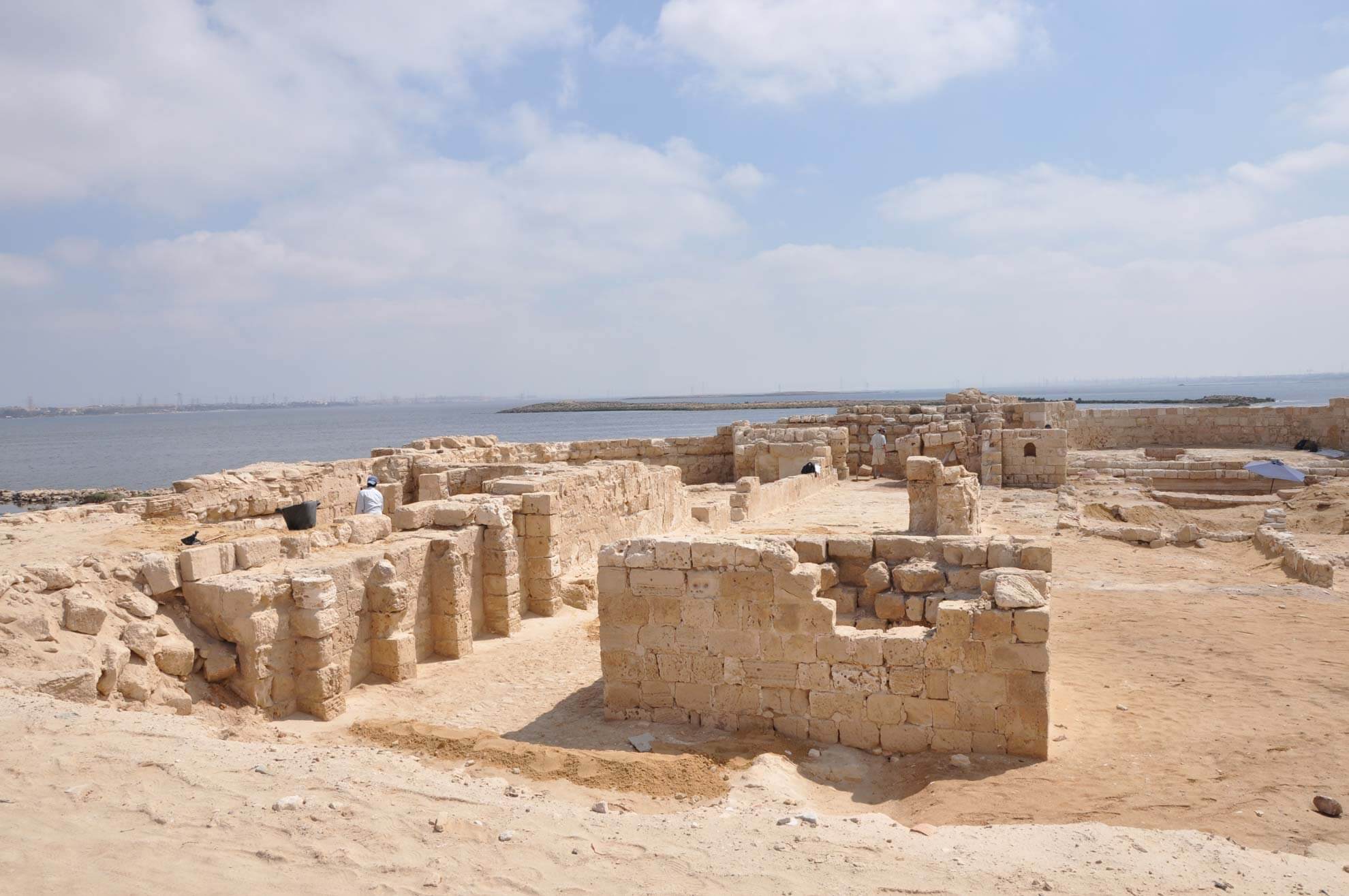‘Marea’/Philoxenite on Lake Mareotis – A Late Antique Ideal City and Pilgrimage Station

Since antiquity, Christians have been making pilgrimages to holy places with great zeal. Apart from Jerusalem, sanctified by the life and passion of Jesus, the most famous and popular pilgrimage centres were those associated with a particular saint. One of the most important of the holy martyrs was Menas, a Roman soldier from Egypt who gave his life for his faith in the last great persecution under Diocletian. Before his death, he expressed the wish that his body be taken to Egypt; the wish was fulfilled by Menas’ sister, who buried her brother in one of the churches in Alexandria. A few decades later, the bishop of Alexandria, Athanasius the Great, ordered the remains of the saint to be removed from the city. The caravan was heading west towards Libya, along the southern shore of Lake Mareotis, when at one point the camels stopped refusing to go any further. This was considered a sign and the saint was buried in the place indicated by the animals.
So much for the legend. Archaeology adds a continuation to this story. Indeed, south of Lake Mareotis, about 45 km from Alexandria, the tomb of Menas was given a monumental form in the 5th century, and the first church was erected next to it. A hundred years later, during the reign of Justinian, a great city was founded, attracting pilgrims from all over the Roman world, including the farthest western provinces: Spain, Gaul, and even Britain. The pious travellers came by sea to Alexandria. Having visited the city, they boarded a ship that would take them across Lake Mareotis to a place from where it was only about 20 kilometres to the sanctuary of Menas. This is where the city was built, which has been uncovered since 2000 by archaeologists from the University of Warsaw and the Archaeological Museum in Krakow.
Philoxenite was erected according to a well thought out urban plan, in accordance with the best traditions of antiquity. The city owes its name to Flavius Philoxenos, a great figure of Byzantine politics in the first half of the 6th century, who financed its foundation. The main objective of the enterprise was to provide a comfortable resting place for pilgrims heading to the sanctuary of St. Menas. Travellers could rest here, staying in quarters adapted for this purpose. They stayed here longer, taking advantage of the possibilities of relaxation offered by the baths – we know of two large bath complexes that could accommodate several hundred guests at the same time. The spiritual needs of the pilgrims were satisfied by participating in the liturgy held in the monumental church, the great basilica. Two kilometres long, a wall of limestone blocks was erected, which followed the shoreline, straightening it out a bit – the wall organized the space, giving it a regular form. The straight lines, bright, almost white, were perfectly visible from the deck of any ship heading across the waters of the lake to one of the Philoxenite piers. The monumental shape of the Great Basilica completed the picture, which must have impressed every visitor.
The aim of the project is to write a biography of this city, until recently unknown to science. Built on a site 40 km from Alexandria, the city with its monumental buildings had to be erected with the cooperation and support of the Bishop of Alexandria, who never allowed an independent bishopric to be established to the west of his capital. The city was an important pilgrimage station, but it also served as a local economic centre until the 8th century.
The project focuses on two main issues related to archaeological research.
- Archaeology of water. ‘Marea’/Philoxenite gives a unique opportunity to describe the functioning of the city and its inhabitants in interrelation with water. The subject of the research will be the port infrastructure (large piers), quays and their construction, large baths (excavations in the so-called western baths), a system of latrines located along the shore, water supply to buildings and residents (water wheels, i.e., saqiyas) and a system of channels discharging waste water and impurities.
- The economy of the city: between the lake and the desert. The area to the west and south of the buildings, cut by canals and water wheels (saqiyas) supplying water to farmlands and orchards, was closely related to the city. On the shore of the lake, only 300 m from the border of the town, remains of a farm with stone buildings, a water wheel and its own pier have been identified (excavations are proposed in the application).
The summary of the proposed project will be placing Philoxenite in the context of new urban foundations emerging in the times from Anastasius to Justinian (Zenobia on the Euphrates, Iustiniana Nova, previously Anastasiopolis in northern Mesopotamia, Sergiopolis).
The project, headed by prof. Tomasz Derda, carried out at the Polish Centre of Mediterranean Archaeology of the University of Warsaw, is funded by the National Science Centre OPUS 25 grant

